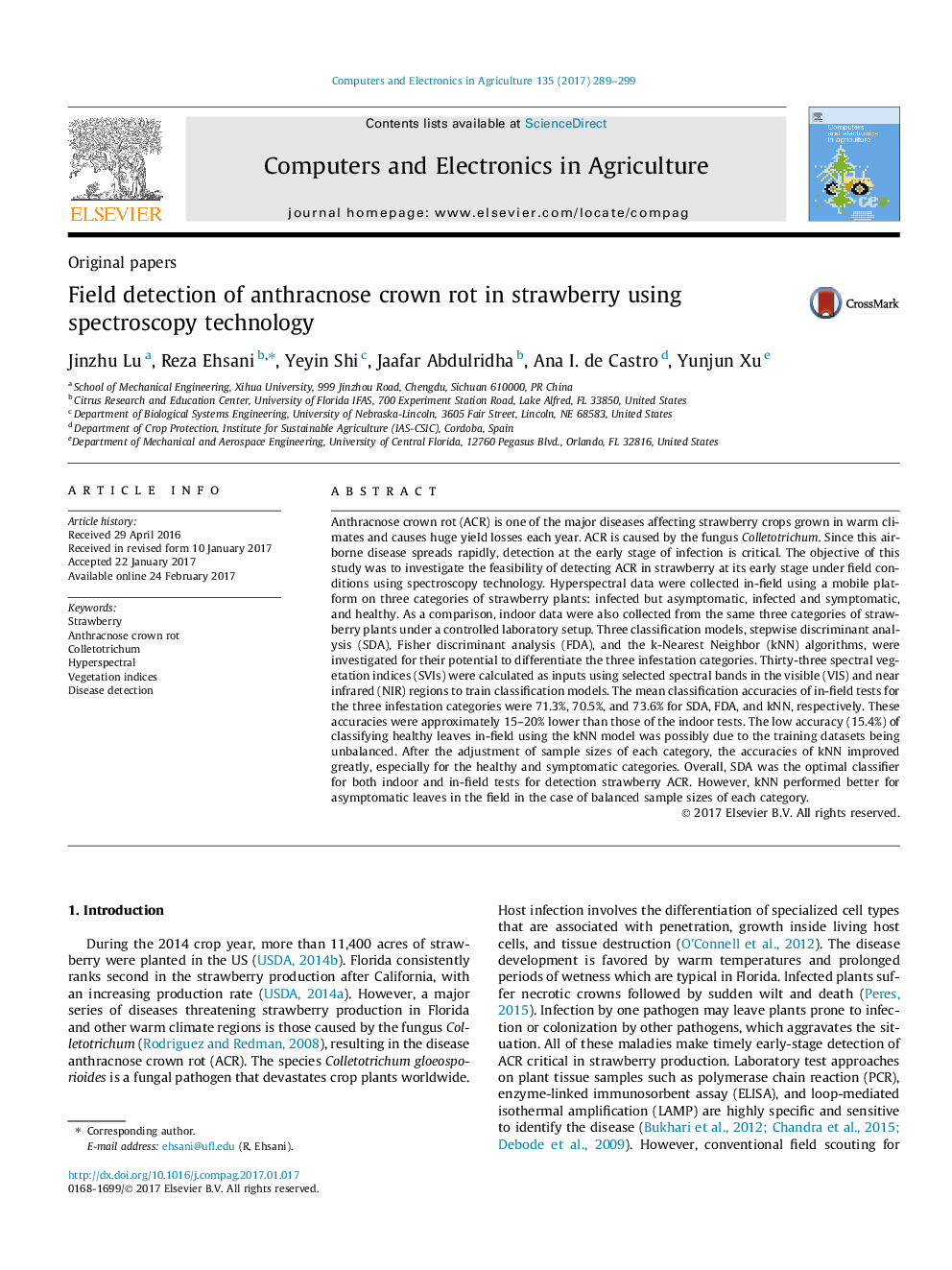| کد مقاله | کد نشریه | سال انتشار | مقاله انگلیسی | نسخه تمام متن |
|---|---|---|---|---|
| 6458802 | 1421113 | 2017 | 11 صفحه PDF | دانلود رایگان |
- In-field hyper spectral detection of strawberry anthracnose crown rot.
- 33 vegetation indices were investigated with three classification algorithms.
- Average in-field detection accuracy was 74% for asymptomatic and symptomatic samples.
Anthracnose crown rot (ACR) is one of the major diseases affecting strawberry crops grown in warm climates and causes huge yield losses each year. ACR is caused by the fungus Colletotrichum. Since this airborne disease spreads rapidly, detection at the early stage of infection is critical. The objective of this study was to investigate the feasibility of detecting ACR in strawberry at its early stage under field conditions using spectroscopy technology. Hyperspectral data were collected in-field using a mobile platform on three categories of strawberry plants: infected but asymptomatic, infected and symptomatic, and healthy. As a comparison, indoor data were also collected from the same three categories of strawberry plants under a controlled laboratory setup. Three classification models, stepwise discriminant analysis (SDA), Fisher discriminant analysis (FDA), and the k-Nearest Neighbor (kNN) algorithms, were investigated for their potential to differentiate the three infestation categories. Thirty-three spectral vegetation indices (SVIs) were calculated as inputs using selected spectral bands in the visible (VIS) and near infrared (NIR) regions to train classification models. The mean classification accuracies of in-field tests for the three infestation categories were 71.3%, 70.5%, and 73.6% for SDA, FDA, and kNN, respectively. These accuracies were approximately 15-20% lower than those of the indoor tests. The low accuracy (15.4%) of classifying healthy leaves in-field using the kNN model was possibly due to the training datasets being unbalanced. After the adjustment of sample sizes of each category, the accuracies of kNN improved greatly, especially for the healthy and symptomatic categories. Overall, SDA was the optimal classifier for both indoor and in-field tests for detection strawberry ACR. However, kNN performed better for asymptomatic leaves in the field in the case of balanced sample sizes of each category.
Journal: Computers and Electronics in Agriculture - Volume 135, 1 April 2017, Pages 289-299
